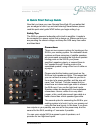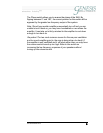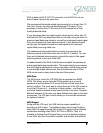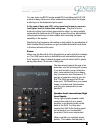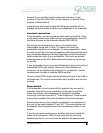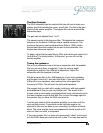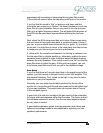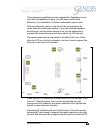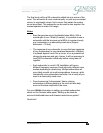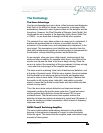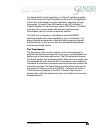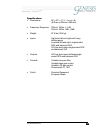
S4/8 Owners Manual Ver 0.1
16
1616
16
absolu te fidelity
™
The Technology
The Servo Advantage
Very few loudspeakers use servo drive, either because most designers
think that it is too difficult to design, too expensive, or because of the
extraordinary demands a servo system makes on the amplifier and the
transducer. However, the Chief Scientist of Genesis, Arnie Nudell, first
introduced the servo system in the legendary Infinity Servo Statik One
in 1968(!) – so we know how to design and build servo systems.
The concept of our servo bass system is an easy one to understand: It
employs an accelerometer as a sensor to constantly monitor the
movement of the woofer cone, and instantaneously compares it to the
input signal. This comparison circuit identifies any deviation from the
ideal and instantaneously applies a corrective signal to compensate for
the deviation; virtualy eliminating inherent woofer distortion.
As an example, when you have a high-impact, low-bass signal that
starts and stops suddenly (for example a kick drum), the inertia of the
woofer cone causes the cone to be slow to begin moving. Once the
cone is in motion, the momentum of the cone causes it to keep moving
- even after the output signal of the amplifier has stopped.
The sonic result is overhang, bloat, lack of tautness and definition, and
a blurring of dynamic impact. With the servo system, the circuit senses
that the woofer is not moving as fast as it should, and applies more
current to make it move faster. When the signal stops, it detects that
the woofer is still moving when it shouldn’t, and applies a counter-
signal to cause the the woofer to stop faster and more effectively than
normal circuitry would.
Thus, the servo-drive reduces distortion and improves transient
response by making the woofer seem mass-less. Typical non-servo
woofer systems have distortion levels that exceed 10% at even
moderate levels. The Genesis servo bass system reduces this
distortion to below one percent at almost any output level. Moreover, it
drives the woofer to constant acceleration, which makes its frequency
response nearly flat!
500W Class-D Switching Amplifier
The servo system places extraordinary demands on the amplifier
because it uses enormous amounts of current to make the woofer
follow the signal. This means that the amplifier used must deliver huge
amounts of clean power.



